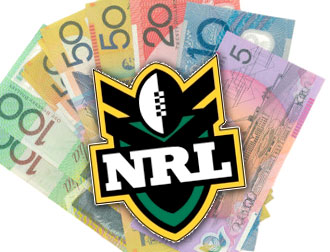
At least 80 new “jobs” will be created for stars who have been lost to the English Super League and rival codes in recent seasons under the plan which will also double the NRL’s annual grant to the clubs from $3.65 million to $7.5 million. The bonanza will ensure league never loses players of the calibre of our list opposite again.
The money from the soon-to-be-negotiated TV deal, worth an estimated $1 billion over five years, will allow clubs to increase their current 25-man NRL rosters to 30 to address the serious issue of player burnout in a season crammed with 26 rounds, finals, Origin, Tests and City Country.
The analysis is a result of an investigation involving discussions with NRL management, club chief executives, coaches and player managers.
For the first time in the game’s history, the grant to the clubs will be higher than the salary cap and should ensure the long-term survival of all 16 clubs. Likely expansion into Perth, Central Coast or Brisbane would not impact on the handouts to the clubs because of extra television revenue that would be generated from an additional game every weekend.
Even with the huge club grants and the player payment windfall, the NRL would have enough money left over to build a war chest of up to $20 million a year for the game’s future development.
This would at least put the game in a position to hold their ground in heartland areas and fight AFL’s push into the Gold Coast and western Sydney.
Even with the $20 million put away for a future fighting fund, it would still leave the NRL with $60 million a year for operating costs – a substantial improvement on its current budget.
Further costs will be saved from a streamlined organisation that removes duplication of administration under the current NRL, ARL, NSWRL, QRL and CRL arrangements.
The bold new plans to future-proof rugby league for the next generation will debated and dissected in finer detail once the new independent commission is up and running – hopefully by this year’s finals series. Players agents across the game are now instructing or advising their stars to hold back on signing long-term deals because of the expected windfall that will come with the 2013 salary cap.
Not all the cash from the new television agreement will go to the superstar players like Greg Inglis, Johnathan Thurston, Billy Slater and co.
But efforts will be made to entice recent code-switchers back to the fold.
The players’ own union is pushing for – and is expected to achieve – an increase from the current minimum wage of $55,000 to $70,000. Having to pay salaries for five extra players in bumped 30-man squads will also soak up some of the difference from the current $4.3 million cap.
“First of all we’ve got to do the television deal,” said NRL spokesman John Brady, “after that there will some robust debate involving many parties to ensure players, clubs and fans get the best outcome.”
Even financially struggling clubs like Penrith, Cronulla and Gold Coast Titans would be capable of surviving and matching it with the premiership heavyweights under the new grants and salary cap.
by Buford Balony

